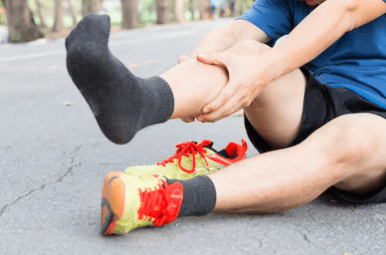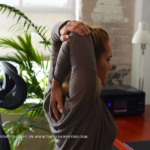One good workout, two weeks of pain — does that sound like your routine?
If you’re nodding your head right now, you’re not alone. That constant cycle of injury, recovery, and re-injury isn’t just bad luck or “part of the game.” It’s your body sending you a very clear message that something deeper is wrong.
Maybe you’re the runner who gets shin splints every few months, or the gym-goer who tweaks their back doing deadlifts, or the basketball player with chronic ankle issues. You rest, you heal, you get back out there… and boom, injured again. It’s frustrating, expensive, and honestly? It’s preventable.
The Real Culprit: Your Body’s Hidden Weaknesses
Here’s what most people don’t realize: that ankle sprain didn’t happen because you “stepped wrong.” That shoulder impingement wasn’t caused by “bad luck” during your bench press. These injuries are symptoms of underlying issues that have been building up for months or even years.
Think of your body like a smartphone. When apps keep crashing, you don’t just keep restarting them — you check what’s running in the background, clear some memory, maybe update the software. Your recurring injuries are like those app crashes, and it’s time to look at what’s really going on under the hood.
Muscle Imbalances: The Silent Saboteurs
Your body is designed to work as a team. When one muscle gets strong while its opposing partner stays weak, it’s like having one person carry all the groceries while their friend just watches. Eventually, someone’s going to get hurt.
Common imbalances that lead to injury:
- Tight hip flexors + weak glutes = lower back pain and knee issues
- Strong quads + weak hamstrings = ACL tears and knee problems
- Overdeveloped chest + weak upper back = shoulder impingement and neck pain
- Strong calves + weak shins = shin splints and ankle instability
If you spend 8 hours hunched over a laptop, then hit the gym without addressing those postural changes, you’re basically asking for trouble. Your body adapts to what you do most, and for most of us, that’s sitting in less-than-ideal positions.
Form Fails: When “Good Enough” Isn’t Good Enough
We’ve all been there. You learned how to squat from watching YouTube videos, or your gym buddy showed you how to deadlift. You think your form is decent, but here’s the thing: small form errors compound over time like interest on a credit card.
That slight knee cave during your squat? Your body compensates by overusing certain muscles while underusing others. Do this hundreds of times, and you’ve created the perfect storm for injury.
Red flags in your form:
- Knees caving inward during squats or lunges
- Shoulders rolling forward during upper body exercises
- Heel striking when running instead of midfoot landing
- Arching your back excessively during overhead movements
The scary part? These compensations often feel “normal” because your body has adapted to them. You might even feel like you’re getting stronger, but you’re actually building strength on top of dysfunction.
The Stabilizer Muscle Problem
Your major muscle groups get all the attention, but it’s the small stabilizer muscles that keep you safe. These are the unsung heroes that control joint position and prevent excessive movement.
Think of stabilizers as your body’s security guards. They’re constantly working to keep everything in the right place. But if they’re weak or not firing properly, it’s like having sleepy security guards — when trouble comes, they can’t react fast enough to protect you.
Why Rest and Ice Aren’t Enough
When you get injured, the typical advice is rest, ice, compression, elevation (RICE). While this helps with immediate pain and swelling, it doesn’t address why you got injured in the first place.
Resting an injury is like putting a band-aid on a leaky pipe. The immediate problem is covered, but the underlying issue remains. Without addressing the root cause, you’re practically guaranteed to get hurt again.
This is where most people get stuck in the injury cycle:
- Get injured → Rest and recover
- Feel better → Return to same activities with same movement patterns
- Repeat the cycle → Because nothing actually changed
Enter Sports Physiotherapy: Your Injury Prevention Game-Changer
Sports physiotherapy isn’t just for professional athletes or post-surgery recovery. It’s a proactive approach to understanding how your body moves and fixing problems before they become injuries.
A good sports physiotherapist doesn’t just treat your pain — they become detective, analyzing your movement patterns, identifying imbalances, and creating a personalized plan to address your specific weaknesses.
What Sports Physio Actually Does
Movement Assessment: They watch how you squat, lunge, run, and perform sport-specific movements. They’re looking for compensations and imbalances that you probably don’t even know you have.
Strength Testing: Not just “how much can you lift,” but “can you control that weight through a full range of motion?” They’ll test your stabilizer muscles and identify weak links.
Corrective Exercise Prescription: Based on your assessment, they’ll give you specific exercises to address your imbalances. These aren’t generic stretches — they’re targeted interventions.
Movement Re-education: They’ll teach you proper movement patterns and help you unlearn the compensations that led to injury.
Building Your Injury Prevention Strategy
Ready to break the cycle? Here’s how to get started:
1. Get a Movement Assessment
Find a qualified sports physiotherapist or movement specialist. Look for someone who:
- Specializes in your sport or activity
- Uses movement screening tools
- Has experience with injury prevention, not just treatment
2. Address Your Weak Links
Common areas that need attention for most people:
- Hip mobility and glute strength (for runners and gym-goers)
- Thoracic spine mobility (for desk workers)
- Ankle stability (for athletes in cutting sports)
- Core stability (for everyone)
3. Make It Part of Your Routine
Corrective exercises aren’t something you do once and forget about. They need to become part of your regular training routine, like warming up or cooling down.
Sample weekly integration:
- 2-3 times per week: Specific corrective exercises
- Before every workout: Dynamic warm-up addressing your imbalances
- After every workout: Targeted stretching for tight areas
4. Progress Systematically
Don’t rush back to full intensity. Follow a progressive plan that gradually increases load while maintaining proper movement patterns.
The Technology Factor
Modern life creates modern problems. We’re more sedentary than ever, spending hours in positions our bodies weren’t designed for. This creates predictable patterns of tightness and weakness that almost guarantee injury if left unchecked.
Your smartphone posture affects your shoulder health. Your commute impacts your hip mobility. Your work setup influences your core stability. Corrective training acknowledges these lifestyle factors and addresses them systematically.
Your Path Forward
Breaking the injury cycle isn’t about working harder — it’s about working smarter. It’s about understanding that your body is an interconnected system where weakness in one area creates problems somewhere else.
Sports physiotherapy and corrective training give you the tools to identify and fix these underlying issues before they become injuries. It’s an investment in your long-term health and performance that pays dividends every time you train without pain.
The choice is yours: keep playing injury roulette with your body, or take control and address the root causes. Your future self will thank you for making the smart choice today.
Remember, the goal isn’t just to get back to your sport — it’s to get back better than before, with a body that’s more resilient, more balanced, and more capable of handling whatever you throw at it.
That cycle of injury and recovery doesn’t have to be your normal. With the right approach, you can train consistently, perform better, and actually enjoy your activities without constantly worrying about the next injury.
Ready to break the cycle? Start by getting a proper movement assessment and taking the first step toward a pain-free, high-performance future.





